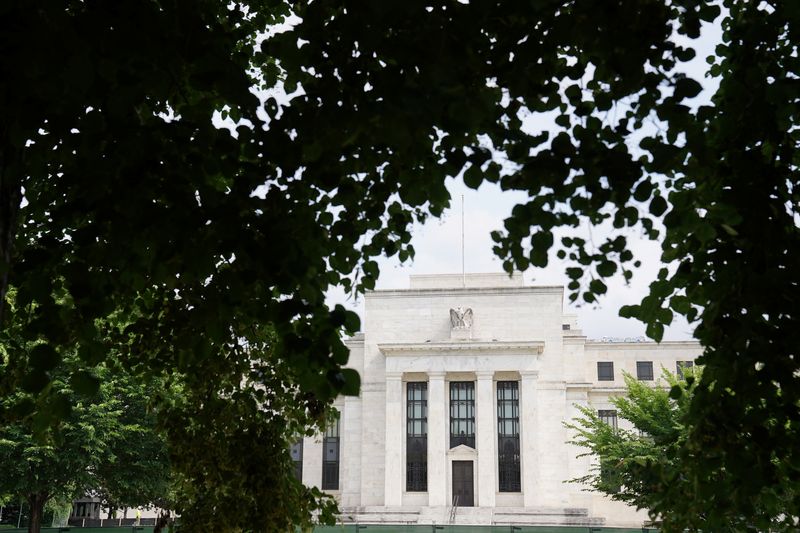By Ann Saphir and Howard Schneider
(Reuters) -For most of this year, Federal Reserve policymakers salted their speeches with new-to-central-banking words like "expeditious" and "front-loading" to underscore their rush to raise interest rates in the face of 40-year-high inflation.
Now some of those same policymakers are reaching for a more familiar lexicon dating from a time when rate hikes came in bland, quarter-point increments, not the 75-basis-point-per-meeting pace they've stuck to since June.
It's one clear signal the U.S. central bank is poised to slow what's been the fastest round of rate hikes in 40 years to take stock of the impact of higher borrowing costs.
Fresh data on Thursday showed inflation slowed more than expected last month, and suggests the Fed's rate hikes so far, which have lifted the Fed's benchmark rate up from near zero in March to a 3.75%-4% range as of last week, may be beginning to bite.
But even as policymakers speaking Thursday used words like "gradual" and "measured" to describe their new approach to rate hikes, they sought to emphasize that U.S. borrowing costs may still end up higher for longer than most thought just a couple months ago.
It was a point seemingly lost on market participants, as U.S. stocks soared and traders priced in a lower peak for the Fed policy rate next year - 4.75%-5%, versus the 5%-plus level seen before the inflation report and the policymaker speeches. Markets are also expecting interest-rate cuts for the second half.
San Francisco Fed President Mary Daly, in a virtual appearance before the European Economics & Financial Centre, said that as of September she expected rates to need to rise to 4.9% next year, higher than the median forecast of her colleagues.
Given that inflation tends to lag other economic data and in light of the various headwinds facing the U.S. economy including the slowdown in global growth, she said, "I support a more gradual approach of getting to it so we can be discovering the right rate as we go."
But, she added, she would rather err on the side of raising rates slightly too far, than not raising them high enough, and would want to keep them there long enough to bring inflation "reliably" back to 2%.
"A more measured approached to rate increases may be particularly useful as policymakers judge the economy's response to higher rates," was how Kansas City Fed Bank President Esther George put it at an energy conference co-hosted by her bank and the Dallas Fed.
But even as she said the peak fed funds rate cannot be "predetermined," she noted that "some have argued" the Fed funds rate must at a minimum rise above year-ahead inflation expectations, currently running at about 5%.
Federal Reserve Bank of Cleveland President Loretta Mester in a separate event on Thursday signaled that she, like Daly, also feels the main risk for the U.S. central bank is that it doesn’t act aggressively enough.

“Given the current level of inflation, its broad-based nature, and its persistence, I believe monetary policy will need to become more restrictive and remain restrictive for a while in order to put inflation on a sustainable downward path to 2%,” Mester said.
Philadelphia Fed President Patrick Harker for his part said he believes the Fed ought to pause once rates get above 4.6%, to gauge the effects of tighter policy. "If we have to, we can always tighten further, based on the data," he said.